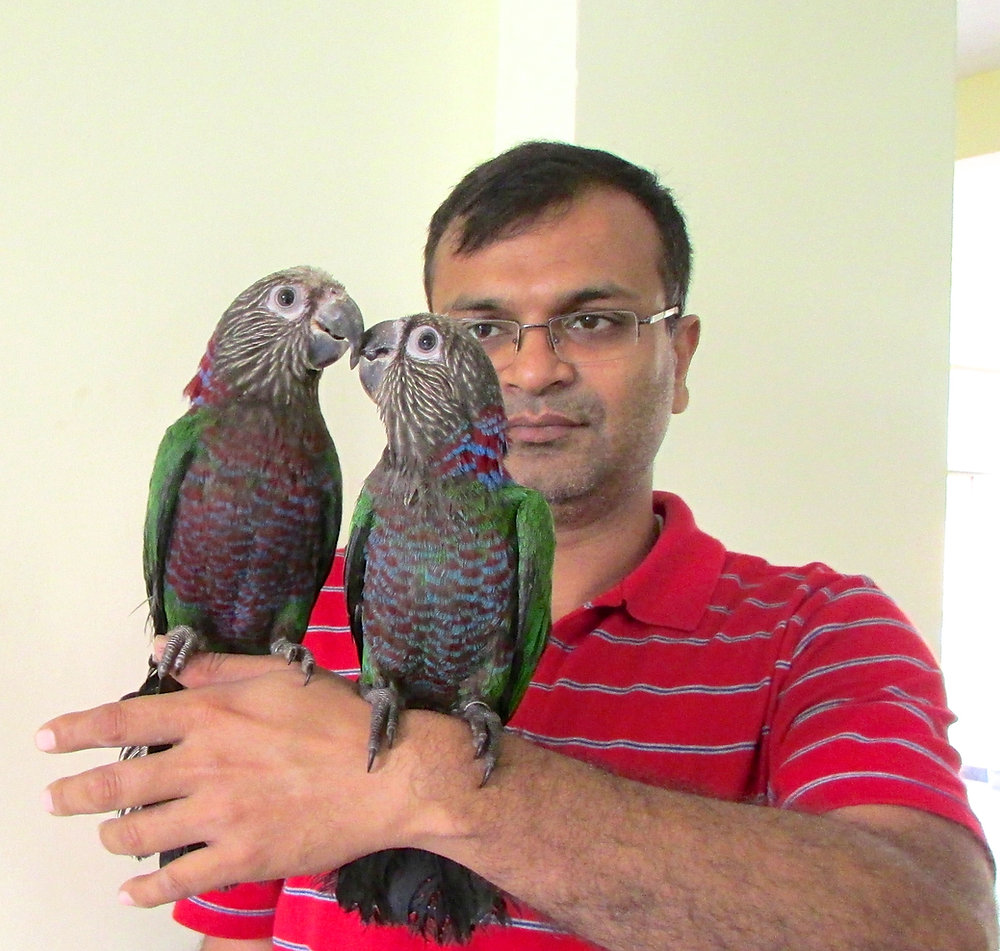The Fascinating World of the Hawk-Headed Parrot
Introduction to the Hawk-Headed Parrot
The hawk-headed parrot, scientifically known as Deroptyus accipitrinus, is an exceptionally captivating bird that is part of the Psittacidae family. This species is
renowned for its striking plumage, which typically exhibits vibrant green feathers accented with shades of blue and yellow. One of the most distinctive
characteristics of the hawk-headed parrot is its unique facial features; the head is adorned with a crest that resembles that of a hawk, giving this parrot its
notable name. Adult hawk-headed parrots are medium-sized, generally measuring around 24 to 28 centimeters in length, making them an impressive sight in their
natural habitat.
The native habitat of the hawk-headed parrot is primarily found in the dense tropical forests of South America, especially within regions such as the Amazon
rainforest. These areas provide an ideal environment for the bird, offering ample food sources and shelter. The hawk-headed parrot prefers residing in humid
lowland forests, where it can forage for seeds, fruits, and nuts. Its strong beak and keen adaptability enable it to thrive in this lush ecosystem.
In addition to its stunning appearance and natural habitat, the hawk-headed parrot has gained popularity among aviculture enthusiasts due to its engaging
personality and ability to mimic human speech. These parrots are known for their inquisitive nature and social behavior, often forming strong bonds with their
caretakers. In the wild, they can be quite vocal and are often seen engaging in playful activities with their flock. This combination of beauty and behavior makes
the hawk-headed parrot a fascinating subject for both bird lovers and ornithologists alike. Understanding the characteristics and natural habitat of this unique
parrot contributes significantly to the conservation efforts aimed at ensuring its continued survival in the wild.
Diet and Feeding Habits
The hawk-headed parrot, known for its striking appearance and vibrant personality, has a diverse diet composed primarily of seeds, fruits, nuts, and flowers,
which constitute the core components of its nutrition in the wild. These birds, native to the Amazon rainforest, exhibit a strong preference for specific types of
food abundant in their natural habitat. They are particularly fond of the seeds from various trees and shrubs found in their environment, demonstrating their
importance in seed dispersal, which plays a vital role in maintaining the health of their ecosystem.
When foraging, the hawk-headed parrot utilizes its strong, curved beak to crack open tough nuts and seeds. Their dexterous feet assist in manipulating food
items, allowing them to select only the ripest and most nutritious offerings. This foraging behavior not only sustains their diet but also contributes to the
biodiversity of their habitat by facilitating the growth of new plants through seed dispersal. As such, these parrots are instrumental in the regeneration of their
forested ecosystem.
In captivity, it is essential for pet owners to replicate a balanced diet that mirrors the hawk-headed parrot’s natural feeding habits to ensure their health and
longevity. A well-rounded diet should include high-quality pellets, supplemented with a variety of fresh fruits and vegetables, nuts, and seeds. However, care must
be taken to avoid foods that can be harmful to these birds, such as avocados and chocolate. Also, access to clean, fresh water should always be available. By
understanding and providing for their dietary needs, owners can maintain the well-being of their hawk-headed parrots, fostering happy and healthy companions.
Social Behavior and Communication
The hawk-headed parrot (Deroptyus accipitrinus) exhibits a complex social structure primarily characterized by flocking behavior. In their natural habitat, these
parrots are often seen in small to medium-sized groups, which can significantly influence their social interactions and overall well-being. Unlike some solitary bird
species, hawk-headed parrots thrive in social environments, and their interactions with flock mates play a crucial role in their daily lives. The dynamics of their
flock life contribute to their social development by providing opportunities for bonding, competition, and cooperation.
When it comes to communication, the hawk-headed parrot showcases a fascinating mix of vocalizations and body language. They possess a diverse range of
calls, which can vary significantly based on the context; for example, alarm calls may alert their flock to potential dangers while mating calls help maintain pair
bonds. These vocalizations are not only essential for maintaining social cohesion within the flock but also help them express individual needs and emotions.
Beyond vocal sounds, their body language, including postures and movements, plays an equally important role in conveying messages. For example, a hawk-
headed parrot may puff up its feathers when displaying dominance or lean towards another bird to indicate submission.
Understanding the social behavior and communication methods of hawk-headed parrots is vital, particularly for those keeping them in captivity. To promote
positive socialization, owners can facilitate interactive play and provide opportunities for the birds to engage in activities with their human caregivers.
Encouraging these social interactions is key to ensuring their mental and emotional health. Enrichment activities that mimic natural social environments can help
prevent behavioral issues often associated with loneliness or boredom, ultimately leading to a well-adjusted and content pet. Recognizing the importance of
these connections will not only enhance the quality of life for captive hawk-headed parrots but also enrich the experience for their owners.
Conservation Status and Efforts
The hawk-headed parrot (Deroptyus accipiter) is currently listed as Near Threatened on the IUCN Red List, which highlights growing concerns surrounding its
conservation status. Various factors contribute to the decline of this species, primarily habitat loss due to deforestation and agricultural expansion in its native
range across the Amazon rainforest. As urban development accelerates, the natural habitats essential for the survival of these parrots continue to diminish,
placing significant pressure on their populations. Additionally, illegal trapping for the pet trade exacerbates their vulnerability, as these birds are prized for their
striking appearance and engaging behavior.
Efforts to conserve the hawk-headed parrot focus on raising awareness about the critical need for habitat protection and the regulations surrounding wildlife
trade. Various organizations are at the forefront of these initiatives, working diligently to implement conservation strategies that include establishing protected
areas and advocating for sustainable land-use practices. Programs that promote community awareness about the importance of preserving local habitats also
play a vital role in encouraging public involvement in conservation efforts. These programs often highlight the ecological benefits of biodiversity and how local
communities can thrive without depleting their natural resources.
To support hawk-headed parrot conservation, individuals can take part in various actions, such as advocating for responsible breeding initiatives and engaging in
habitat restoration projects. Contributing to organizations dedicated to wildlife protection can also have a significant impact. Moreover, educating oneself and
others about the threats facing the hawk-headed parrot can help foster a culture of stewardship towards this remarkable species. Ultimately, by participating in
these conservation efforts, individuals can contribute to the ongoing mission to protect and sustain the lifeways of the hawk-headed parrot in the wild. hawk headed parrot for sale

